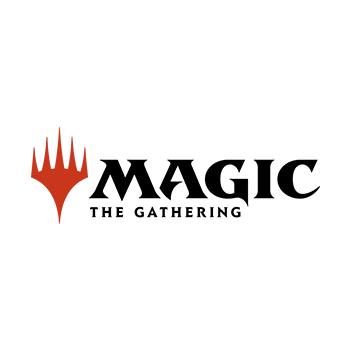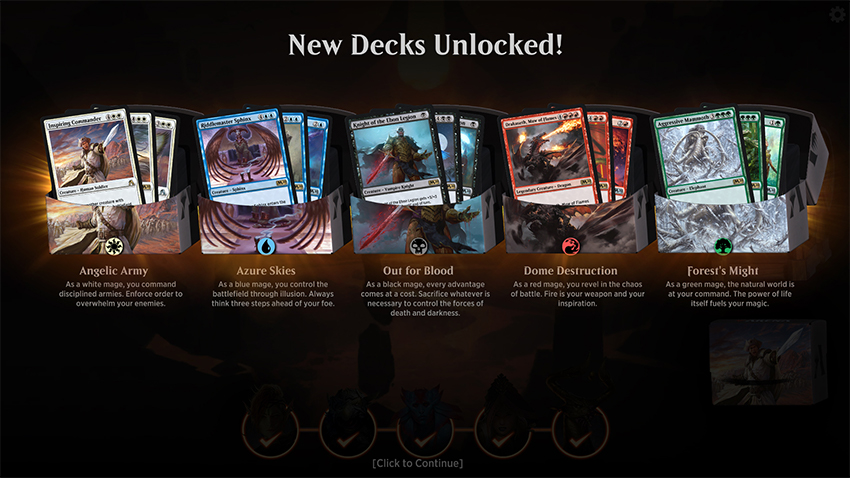Handy News To Picking MTG The Gathering
Wiki Article
What Do You Mean By Mtg Magic: The Gathering Trading Cards?
Magic: The Gathering was first released in 1993, and has since gained a massive following worldwide. The game first came out in 1993 and has since grown into a huge following worldwide.Basics of MTG-
Gameplay: Players assume the role of powerful wizards named "planeswalkers" playing with cards to symbolize magical spells.
Cards- The game includes many different cards like creatures, spells, artifacts, enchantments planeswalkers and lands. Each kind has its own properties and effects.
Deck Building - Players construct their decks by using at least 60 cards, and they can include different colors of mana.
Game Objectives. Players try to reduce their opponents' life total to 0 using spells, summoning creatures and the use of cards strategically.
Trading Cards
Collectibility – Some MTG cards due to their rarity, art, or abilities are very sought-after. Collectors and gamers alike will be fascinated by these cards.
Expansions and Sets- The game introduces new expansions and sets regularly, and introduces new mechanics, cards, as well as themes for the game.
Market and Value - Certain cards, especially rare or powerful cards, may have significant financial value on the secondary market where players are able to buy, sell and trade cards.
Playstyles and formats
Standard- The standard version is one that uses the most up-to-date sets, and rotates its card pool.
Modern, Legacy, Vintage Older sets are allowed to cater to different strategies and tastes.
Limited Formats- Sealed and Draft formats, where players construct decks from a limited pool of cards, adding an element of randomness and strategy.
Community and competitions
Local and global communities Players congregate at game shops tournaments, conventions, and conventions to trade, play and socialize.
Competitive Play - Organized play includes tournaments, championships, as well as professional events that offer substantial prize pools.
Cultural Impact
MTG has a huge fan base and has had an immense impact on other forms of media such as comics, games for video online content, and many more.
Magic: The Gathering has a lot of strategic elements that mix the art of combining chance, skill and deck building strategies. This game offers diverse gameplay for players at all levels. See the top rated magic cards where to buy for blog info including sell cards, magic mtg cards, magic the gathering what is it, mtg magic decks, magic the gathering type of cards, magic cards collection, magic cards, magic the gathering cards prices, cards for sell, best mtg cards and more.

What Are The Magic The Gathering Artifacts Employed For? What Are The Pros?
Magic: The Gathering artifact cards are cards that do not represent the land or creatures however, they represent mysterious objects, devices, or even structures. They provide special effects and capabilities. Here are their pros and cons-Pros-
Artifacts are versatile. They can be used for a wide range of applications, such as providing mana or boosting creatures. They also can draw cards, manipulate a board, and even be utilized as win conditions. Their versatility makes them a great choice for a variety of deck strategies.
Persistent Effekte - Artifacts in the battlefield are usually in place until removed. They can have a an effect that lasts or offer benefits that continue to impact the game.
Artifacts that are colorless are able to be used without requiring specific colors of mana. They can fit into decks of varying colors without altering the consistency of mana.
Synergies- Artifacts are able to synergize with other types of cards, such as creatures, enchantments, or spells that can create powerful interactions and combos which can improve a player's game.
Cons-
Artifacts have a vulnerability that permits them to be targeted and destroyed by spells, effects or other cards that interact with artifacts. Cards that are designed to work with artifacts will also have the ability to neutralize or destroy the objects.
Cost of Resources - Some extremely rare and powerful artifacts are costly to cast, particularly in the beginning of the game. This could hinder a player's strategy or leave them vulnerable to the early turns.
Artifact removal - Certain opponents and strategies are primarily focused on removing the artifacts. While doing so they could make them less powerful or take away their benefits.
Dependence on Other Cards. Some artifacts are only able to be effective when other cards are also supporting them.
Artifacts are also a crucial role in the building of decks and strategies. Their unique abilities can be used to complement different game plans. They can also be used in many deck archetypes, making them valuable in Magic: The Gathering. The possibility of their removal and the possibility of their dependence on other cards should be considered when designing a deck around them. Check out the top rated mtg foils for blog info including magic mtg cards, magic set, magic tournaments, mtg finance, mtg the gathering, mtg top cards, magic card type, magic tcg, magic the gathering buy, magic search cards and more.

What Do Magic The Gathering Deck Constructions Do? What Are The Pros And Cons Of Magic: The Gathering Deck Construction?
Deck construction is an important element of Magic: The Gathering. It is the process of assembling the deck in order to come up with an effective strategy to beat your opponent. These are the pros and cons-
Customization - Players can build decks that are tailored to their preferred style of play strategy, preference, and preferences. This allows for a greater amount of personalization and innovation in the game.
Strategic Depth: Deck design is a crucial aspect of playing. In order to build efficient and powerful decks, you must be able to think strategically, comprehend card synergies, and also the meta.
Flexibility. Players can alter their decks to match the ever-changing metagame. This allows them to adjust their strategies to combat common strategies or adjust to challenges.
Deck Building allows players to express themselves through themes, card choices, and deck design.
Cons-
Resource Limitation - The cards players possess or have access to restrict their choices. Sometimes, getting certain cards needed to create a deck can be costly or requires significant trading and buying.
Balance challenges. A balanced deck that can handle a variety of scenarios and strategies can be difficult. A deck that is too focused on a single strategy could be unable to handle certain matchups.
The complexity of deck building for New Players. For players who are new deck building can be quite overwhelming. This is because of the a huge number and different kinds of cards.
Meta Dependency- Creating decks exclusively based on current meta can sometimes result in predictable play and a lack of creativity. Some players can follow trends rather than exploring innovative strategies.
Deck building is an extremely enjoyable and important part of Magic: The Gathering. Deck construction provides players with the opportunity to demonstrate their creative thinking, strategic skills and creativity. It is a flexible and individualized game, however it can also be challenging because of resource limitations and the need for balance. Deck building can be an extremely challenging part of playing cards however, it can also be rewarding. Have a look at the recommended card market magic the gathering for blog recommendations including magic the gathering cards value, magic the gathering show, mtg top cards, magic the gathering card lot, magic decks, card collection, collection card, card collection, magic the gathering collection, magic the gathering cards prices and more.
